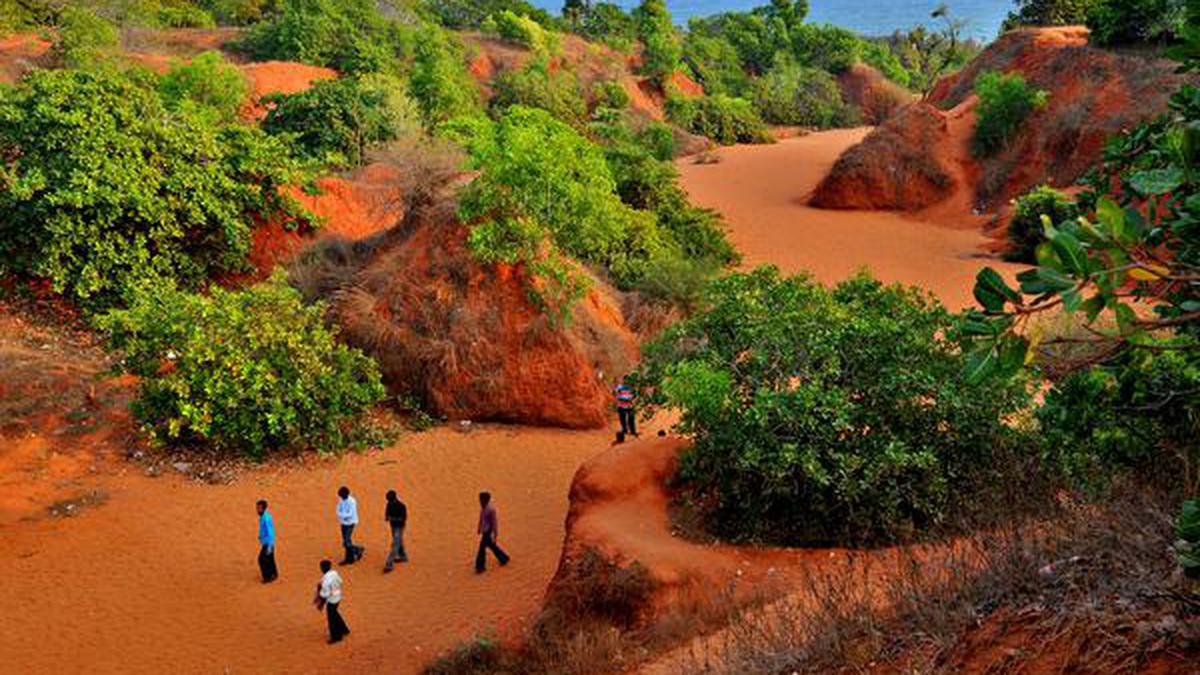
Vizag’s Erra Matti Dibbalu cries for attention
The Hindu
Erra Matti Dibbalu, a geo heritage site, used to be visible from Beach Road in Visakhapatnam. The red sand dunes were formed during the last glacial maxima, 18,500 years ago. Archaeological evidence of Stone Age tools found.
Standing at heights ranging from 10 to 60 feet above the ground, the Erra Matti Dibbalu (red sand dunes or red sand hills) used to catch the attention of any motorist driving along the Visakhapatnam-Bheemunipatnam beach road, with their bright red colour against the backdrop of a blue sky, till a few years ago.
Now, visitors have to park their vehicles on the roadside, and walk through the pathway between trees to have a glimpse of the red sand dunes. Trees and shrubs have grown all around, and even on the red sand hills, blocking the magnificent view from Beach road.
Tourists, who wish to see the awe-inspiring sand hills, will now have to take a detour either a little ahead of INS Kalinga junction towards Nidigattu and reach JV Agraharam or from the Bheemunipatnam side to reach JV Agraharam behind the hills.
A view point was set up towards the landside-end of the red sand hills during the tenure of the previous government. The high tower gives a panoramic view of the red hills, the green trees in between and blue waters of the Bay.
“The red sand (a mixture of sand and mud) is getting eroded gradually during the rains, posing a threat to its existence. We used to walk from one peak to the other through the pathways at one point of time,” says Gurunadh of JV Agraharam village, who was relaxing on the tower.
Unfortunately, there are no direction boards showing the way from Beach Road to the view point either from Bheemunipatnam side or from the Nidigattu side.
The Erra Matti Dibbalu, which have been declared as one of the 34 national geo heritage sites, had formed during the last glacial maxima (LGM), estimated to have occurred globally around 18,500 years ago. The coast line of the Bay of Bengal is estimated to have been about 50 km inwards into the land during the LGM. Archaeological evidences of Stone Age tools from microlithic, mesolithic and paleolithic eras had also been found in the region. The red sand dunes have also been popularised by movies shot here during the past few decades.











